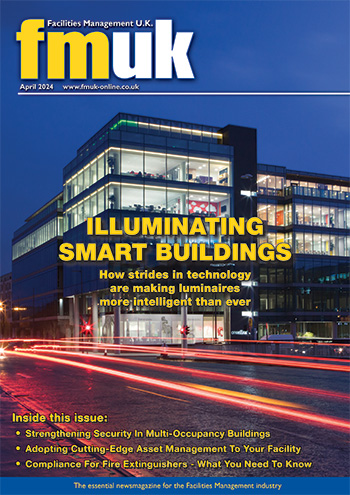IWFM Anniversary Research Sets Out ‘Mega’ Opportunity For Lynchpin Sector

Over three decades, IWFM has forged a framework of standards, qualifications and best practice to professionalise this critical sector and promote it as a career of choice, helping businesses to unlock extra value, drive productivity and build resilience for the future.
IWFM CEO Linda Hausmanis said: “After 30 remarkable years, it’s important to appreciate the scale of change over that time and the ‘lynchpin’ contribution of workplace and facilities management to organisations. To serve our members best and advance this critical profession as a whole it is vital to look to the future, identify forthcoming megatrends and address potential effects. This research shares expert perspectives and actionable information to influence strategy and practices and unlock the profession’s potential to transform organisations. By doing so, we can better equip professionals and organisations with the tools they need to succeed in the time ahead.”
Three Megatrends That Will Affect Workplaces For Years To Come
In “30 years back, 3 trends for the future”, IWFM articulates the foundations on which to build the profession’s future, aided by the insight of experts from its community. The report identifies three “megatrends” affecting professionals, the sector and the wider business world today: embedding workplace strategy as a service; putting people, planet and profits on the same footing; and the relationship between smart buildings and WFMs.
Workplace strategy, the first megatrend, is set to become mainstream in demand and supply. This will present a huge opportunity for WFMs and FM service providers in years to come, and it is important that they grasp the opportunity early, evidence their value and secure their seat before others fill it.
On the second, progress in ESG and sustainability is uneven at best. While many organisations have taken positive steps, few have embedded sustainability as core strategic outcomes. That will change, not simply due to political and societal pressures, but from the tangible benefits that action delivers in terms of profits. Those companies that put people, planet and (still, much needed) profits on the same footing will be best positioned to achieve all three.
Thirdly, smart buildings are increasingly advocated as a driver for automating and supporting maintenance and security, improving workplace and customer experience, and delivering sustainability outcomes. And yet, despite incredible advances, experts agree that smart buildings and their ecosystems remain in earliest stages of development and the concept lacks a clear definition and an underpinning specification. As the research details, however, this presents both a challenge and opportunity for WFM.
IWFM Director of Communications and Insight Jenny Thomas said: “The report we’ve released today has been a key initiative in IWFM’s landmark year. We’re grateful to all those whose insights helped to create it. Its analysis serves as an invaluable resource for all professionals and the sector and look forward to supporting the community for the decades ahead.”


























































